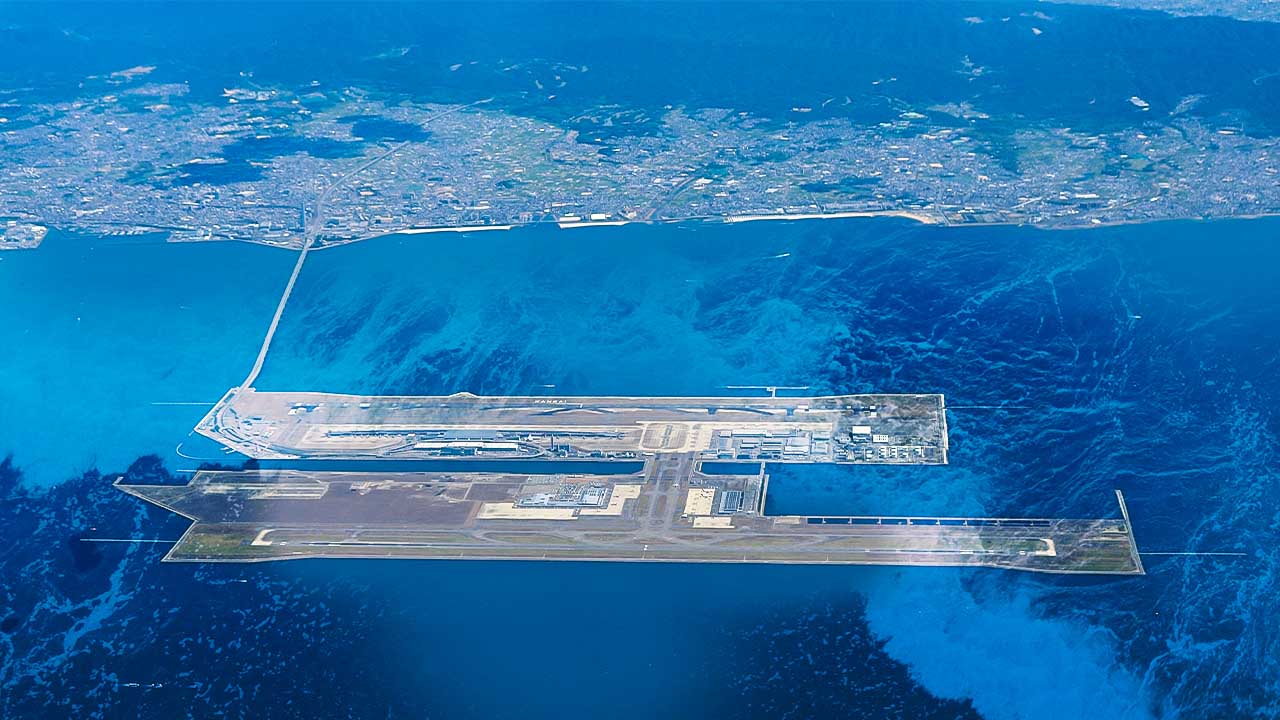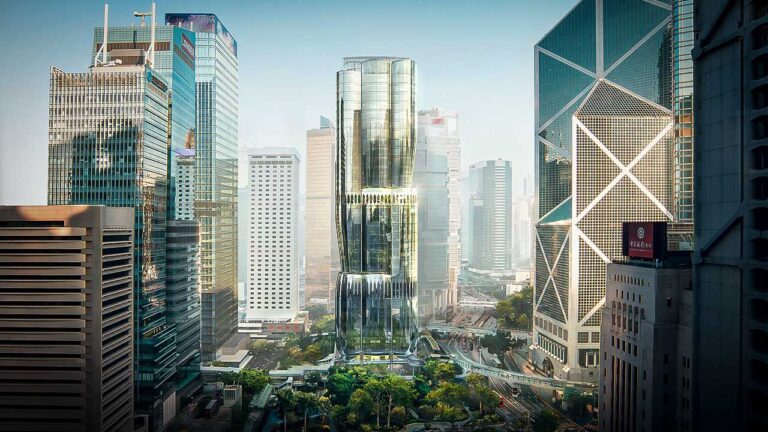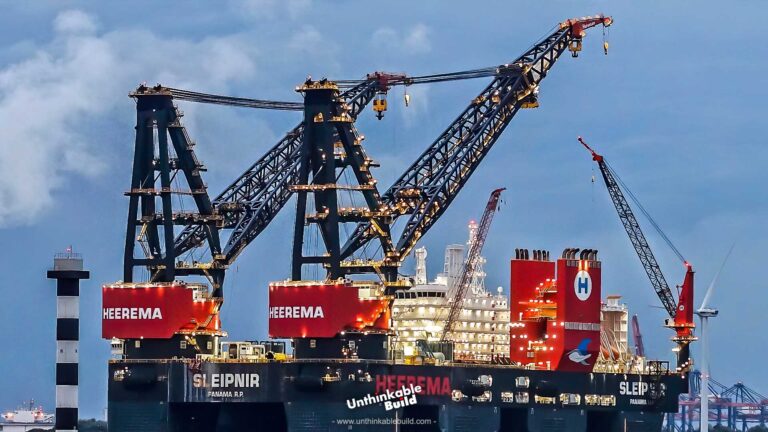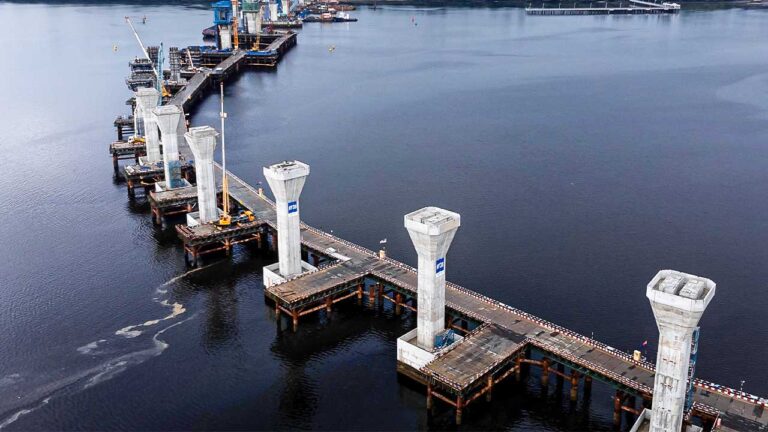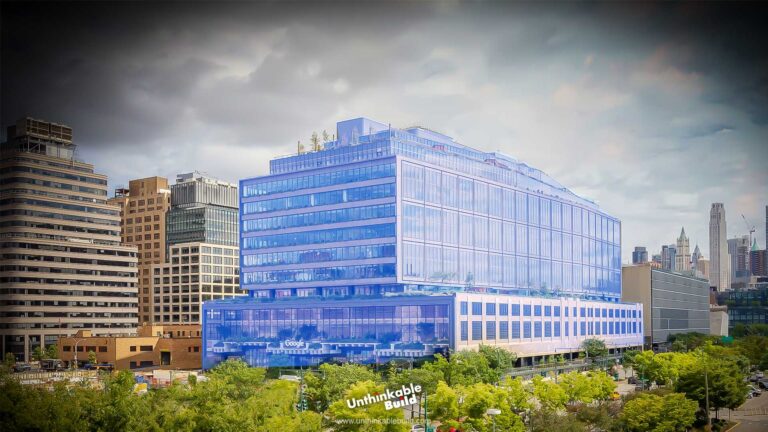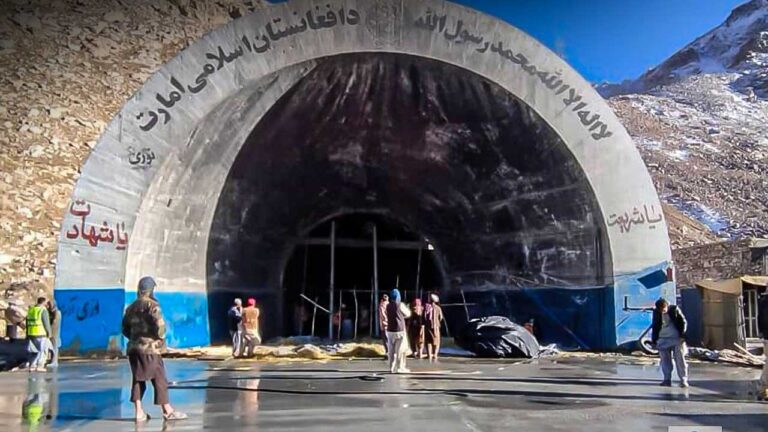Will Japan Be Able to Fix This $20B Sinking Kansai Airport
Japan has been a powerhouse of innovation, significantly contributing to the global technological landscape.
In 1964, Japan introduced the world’s first bullet train, the Hikari No. 1, drastically reducing travel time between Tokyo and Osaka. In the early 1990s, Japanese scientists created blue LED light, leading to energy-efficient screens and lightbulbs. By 2003, Japanese inventors brought android robots, resembling humans, from science fiction to reality. These innovations highlight Japan’s significant role in shaping modern technology.
However, the Japanese innovation we are highlighting today is experiencing a rapid decline, despite the country’s numerous advancements in other areas.
Japan is home to several major international airports that serve as important travel hubs. Kansai International Airport, near Osaka, is notable for being built on two artificial islands. It offers a wide range of international and domestic flights, advanced passenger amenities, and unique architectural design.
When Kansai International Airport in Japan opened in 1994, it was celebrated as an engineering marvel and one of the world’s floating airports. In September 2007, a second runway became operational on an additional artificial island. Overall, the construction of the airport exceeded $20 billion in costs. However, the airport has faced the significant challenge of gradually sinking. So far, it has sunk 12 meters, moving further from the city each year.
It is predicted that the airport will be entirely underwater by 2056. Prior to that, urgent measures must be implemented to preserve this engineering marvel from further deterioration. Will experts be able to achieve success in this endeavor?
Also Read: Saudi Arabia Races to Complete the $22B Riyadh Metro on Time
Osaka resides in the Kansai region, historically celebrated as Japan’s commercial hub during its merchant era. This historical background lends Osaka a distinct cultural richness that contrasts sharply with Tokyo’s modernity.
Kansai International Airport exemplifies engineering innovation and architectural excellence, serving as a vital gateway connecting Japan with the global community. It was constructed in response to the overcrowding issues at the original Itami Airport in Osaka. Construction of this airport began in 1987 and took seven years to complete.
Opening its doors in 1994, the new Kansai International airport was strategically situated away from residential zones, enabling it to operate around the clock. This development significantly bolstered Japan’s aviation infrastructure, establishing Kansai as a pivotal international hub. Engineers undertook the ambitious task of building the airport on two artificial islands, overcoming formidable challenges such as typhoons and seismic activities.
Originally planned near Japan’s Kobe region, the proposed location for the Kansai airport faced opposition from city officials and locals. This led to a unique decision – constructing the new airport in the middle of the sea, ensuring operations could run 24 hours a day without disrupting nearby residents.
Building an airport in this unconventional location required engineers to drain millions of liters of water from the 20-meter deep soft clay beneath the chosen site before constructing a protective seawall. This innovative approach provided ample room for runways, terminals, and ancillary facilities. Engineers navigated considerations such as typhoons, earthquakes, and land subsidence, employing advanced techniques to stabilize the island and ensure its resilience.
The site underwent significant reinforcement to support the weight of a sprawling airport. This involved laying down 1.52 meters of sand over the soft seabed and installing about 2.2 million vertical pipes, each nearly 15.2 centimeters in diameter. These pipes were filled with sand to drain moisture from the soil, enhancing the foundation’s stability.
The airport boasts a 3.5-kilometer-long runway and two terminals, Terminal 1 and Terminal 2. Terminal 1 was designed by renowned architect Renzo Piano and features a distinctive roof resembling a bird in flight.
Emphasizing natural light, spacious interiors, and efficient passenger flow, Kansai Airport’s design enhances the travel experience. Glass walls offer expansive views of Osaka Bay, contributing to a pleasant and airy ambiance.
Transport links include bridges and a high-speed rail connection, facilitating convenient access to Osaka and neighboring cities.
Over its 30-year history, the floating airport has endured significant challenges. It withstood the devastating 1995 Great Hanshin Earthquake, which reached a magnitude of 7.2 and claimed over 6,000 lives. In 1998, the airport also survived Typhoon Stella, which triggered more than 70 landslides.
Despite these feats, the airport is sinking faster than expected. Due to its foundation resembling a saturated sponge, experts initially projected a sinking of 5.7 meters by 1990. However, by that time, it had already subsided by 8.2 meters. Currently, the airport has shifted gradually away from the city boundaries and has sunk nearly 12 meters, yet it remains operational, catering to passengers as usual.
Meanwhile, engineers are primarily concerned not with the sinking rate but with the uneven settling of the facility. Experts suggest that the central area of the airport may be sinking faster than its edges.
Despite concerns about sinking, the outlook remains optimistic, and Kansai Airport has been actively expanding. In December 2023, a new international departure area was inaugurated, with further expansions slated for completion by 2025.
The presence of Kansai Airport has spurred economic development by attracting businesses, hotels, and various tourism-related services. This growth has transformed the region into a bustling hub for both leisure and business travelers, contributing to job creation and overall prosperity.
Annually handling millions of passengers, Kansai Airport facilitates a steady influx of tourists. Travelers arriving here have easy access to renowned attractions such as Osaka Castle, Universal Studios Japan, and the historic city of Nara, enriching their cultural journey through Japan.
The Ministry of Land, Infrastructure, Transport, and Tourism in Japan has laid out several proactive measures to tackle these issues and safeguard the airport from additional damage.
One key initiative involves raising the airport’s 3,500-meter-long runway by approximately 1 meter using asphalt. This elevation will be implemented in stages to minimize disruption to ongoing flight operations. Simultaneously, the height of seawalls designed to shield against high waves will be increased. This enhancement is crucial for bolstering disaster preparedness, particularly during typhoons, and ensuring the safety and stability of airport operations.
The gradual elevation of the runway will be achieved through the application of damage-resistant asphalt, with construction primarily scheduled during nighttime hours to mitigate any impact on airport activities. This undertaking marks a significant engineering effort, representing the first large-scale endeavor of its kind to elevate a runway by such a measure. The concurrent elevation of seawalls further underscores the commitment to maintaining optimal conditions for safe aircraft take-offs and landings.
The timeline for implementing the measures at Kansai Airport may vary depending on factors such as construction schedules, weather conditions, and logistical challenges. A preliminary estimate indicates that the runway elevation and seawall height increase could span several months to a year. This gradual approach is designed to mitigate any disruptions to airport operations throughout the construction period.
Despite the significant financial investment required, these measures are considered essential to protect Kansai Airport from future disruptions caused by sinking and flooding. Situated in a unique location, the airport necessitates innovative solutions to bolster its resilience and ensure uninterrupted service for both passengers and airlines.
Also Read: Gordie Howe Bridge Marks Milestone 2000 Days Into Construction
Facing these challenges, Kansai International Airport is positioned to play a pivotal role in Japan’s future through ongoing ambitious redevelopment endeavors. Recently, Kansai Airports unveiled a modern airside departures area in Terminal 1, marking the initial phase of a comprehensive expansion and refurbishment project spanning four phases over five years. By 2026, the entire facility is slated for transformation, with plans aimed at increasing its capacity to accommodate 40 million international passengers annually—an increase from pre-pandemic levels of approximately 23 million.
The redevelopment not only aims at expanding capacity but also focuses on enhancing the passenger experience. A new centralized immigration facility has streamlined passenger entry into the commercial area, promising improved efficiency.
Moreover, Kansai International Airport’s strategic position as a major hub will be further accentuated as it gears up to host Expo 2025 Osaka. Already serving as a key gateway for major airlines, this airport is expected to play a crucial role in accommodating increased visitor traffic during the international exposition.
While humans cannot prevent or directly combat natural disasters, it is imperative to mitigate the destruction they cause. Succumbing to fear and surrendering is the true defeat, whereas resilience and proactive planning in the face of adversity characterize thriving nations. If you align with this perspective, we encourage you to voice your opinion and share the accompanying video. Don’t forget to subscribe to our channel for further updates on remarkable construction projects worldwide.

